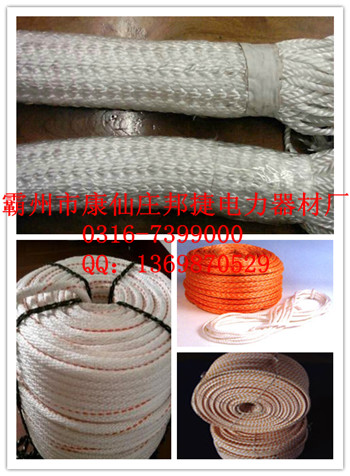阀门协会风险计算
2010-05-27 13:24:39 阅读4 评论0 字号:大中小
原文:
Methods: Between October 2005 and February 2009, 71 patients (44 female) underwent transcatheter transapical aortic valve implantation with either 23- or 26-mm Edwards Lifesciences transcatheter bioprostheses. All patients with symptomatic aortic stenosis were declined for conventional aortic valve replacement owing to unacceptable operative risks and were not candidates for transfemoral aortic valve implantation because of poor arterial access. Clinical and echocardiographic follow-up was performed before discharge, at 1 and 6 months, and then yearly. Mean follow-up was 12.9 ± 11.5 months, with a total follow-up of 917.3 patient-months. Results: Mean age was 80.0 ± 8.1 years; predicted operative mortality was 34.5% ± 20.4% by logistic EuroSCORE and 12.1% ± 7.7% by the Society of Thoracic Surgeons Risk Calculator. Valves were successfully implanted in all patients. Twelve patients died within 30 days (30-day mortality: 16.9% in all patients, 33% in the first 15 patients, and 12.5% in the remainder), and 10 patients died subsequently. Overall survival at 24 and 36 months was 66.3% ± 6.4% and 58.0% ± 9.5%, respectively. Among 59 patients who survived at least 30 days, 24- and 36-month survivals were 79.8% ± 6.4% and 69.8% ± 10.9%, respectively. Late valve-related complications were rare. New York Heart Association functional class improved significantly from preoperative 3.3 ± 0.8 to 1.8 ± 0.8 at 24 months. The aortic valve area and mean gradient remained stable at 24 months (1.6 ± 0.3 cm2 and 10.3 ± 5.9 mm Hg, respectively). Conclusions: The results suggest that transapical transcatheter aortic valve implantation provides sustained clinical and hemodynamic benefits for up to 36 months in selected high-risk patients with symptomatic severe aortic stenosis. Perspective: Physicians and patients in Europe and Canada have had access to, and have been using for several years, approved devices for transcatheter aortic valve replacement (TAVI). Reserved for patients with very high or prohibitive estimated operative risks, these devices offer a form of therapy for patients with a mortal disease and no other realistic option. Although transfemoral retrograde TAVI might be suitable for the majority of patients, vascular access limits this approach in some. A transapical approach serves as an alternative means for TAVI in such patients. As valves and their delivery systems evolve, with smaller and more flexible systems, vascular access for transfemoral retrograde TAVI might be expected to be less prohibitive. These data suggest that the transapical approach, in the right hands and after a significant initial learning curve, appears to be a viable option for what may be the highest risk patients––inoperable patients with vascular access inadequate for retrograde TAVI. David S. Bach, M.D., F.A.C.C.
原文来自:http://www.digitalspy.co.uk/gaming/news/a192467/valve-begins-ai-bot-testing-on-tf2.html
Valve begins AI bot testing on 'TF2' 是由 提供的阀门新闻,中文译文仅供参考,以下提供站内导航搜索:
以下是参考译文:
译文:阀门协会风险计算
方法:2005年10月间接受2009年2月,71例(44女)经导管植入transapical主动脉瓣或23 - 或26毫米的爱德华兹兹利费斯西恩西斯导管瓣膜。有症状的主动脉瓣狭窄患者拒绝所有的常规主动脉瓣 手术的风险,由于无法接受替代的,并不是为经股动脉进入,因为穷人主动脉瓣膜植入候选人。临床及超声心动图随访出院前进行,在1和6个月,然后每年。平均随访12.9 ± 11.5个月,总后续的917.3病人个月。 结果:平均年龄为80.0 ± 8.1岁;预测手术死亡率由12.1%和 后勤之EuroSCORE ± 7.7%,34.5%± 20.4%,由胸外科医师协会风险计算器。阀门被成功植入所有病人。 12名患者死亡后30天(所有患者30天死亡率:16.9%,33%的前15例,其余12.5%)和10名病人死亡后。整体存活率为24和36个月为66.3%± 6.4%和58.0%± 9.5%,分别为。其中59例谁存活至少30天,24 - 和36个 月生存率分别为79.8%± 6.4%和69.8%± 10.9%,分别为。晚阀门有关的并发症是罕见的。纽约心脏协会功能分级改善,由术前的3.3 ± 0.8 1.8 ± 0.8在24个月显着。主动脉瓣面积和平均坡度在24个月保持稳定(1.6 ± 0.3 cm2与10.3 ± 5.9毫米汞柱,分别)。 结论:研究结果表明,经导管主动脉瓣植入transapical提供 持续长达36个月,在选定的高危症状严重主动脉瓣狭窄患者的临床及血流动力学的好处。 观点:医生和患者在欧洲和加拿大已经获得,并已使用了数年,批准了经导管主动脉瓣置换装置(塔维)。对于高风险或过高估计手术病人预留,这些设备为患者提供xx的一个致命的疾病,没有其他现实的 选择形式。虽然经股逆行塔维可能适合大多数患者,血管通路限制在一些做法。阿transapical方法作为另一种手段的塔维这类病人。由于阀及其运载系统的发展具有更小,更灵活的系统,经股逆行塔维血管通路,可以 预料到得令人不敢问津。这些数据表明,transapical办法,在 正确的手中后,一个重要的初始学习曲线,似乎是一种可行的选择是什么,可能是{zg}风险的患者 - 血管逆行进入塔维不足无法手术的病人。大卫巴赫,医学博士,F.A.C.C.
更多新闻



